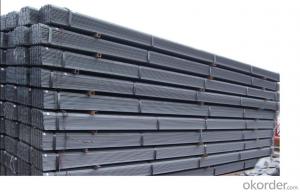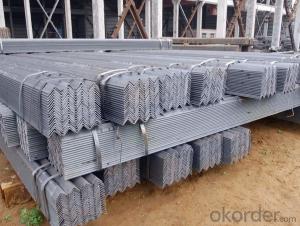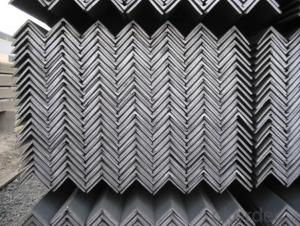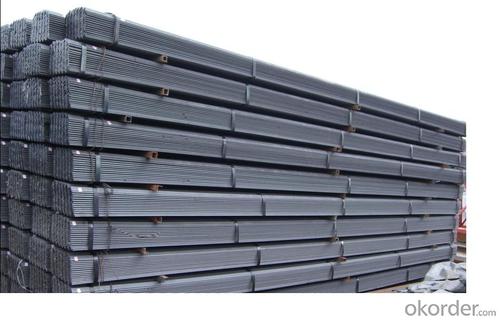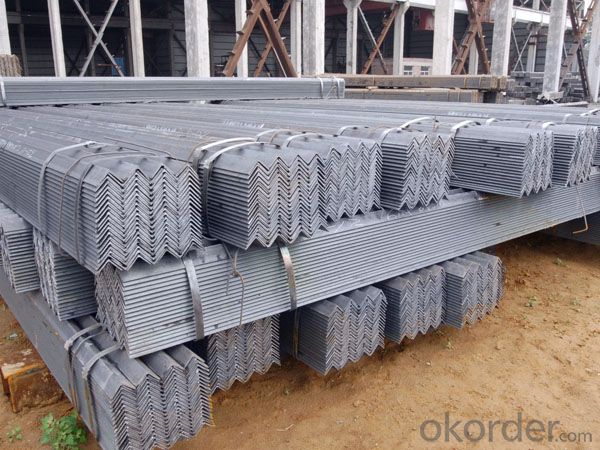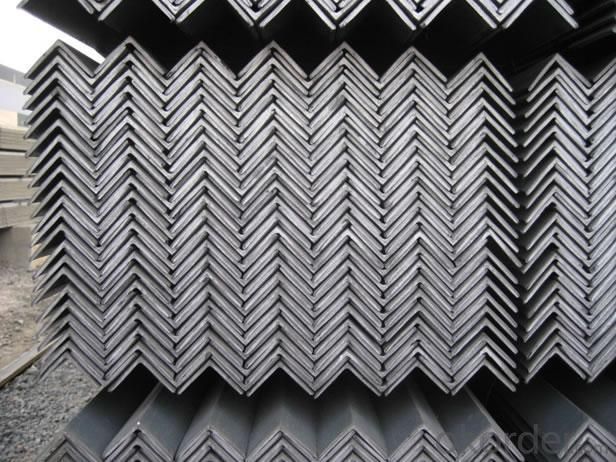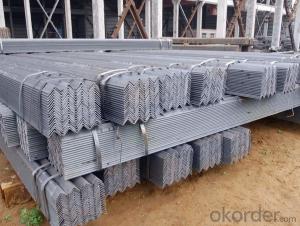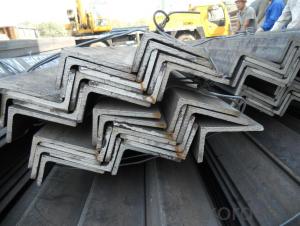Steel Unequal Angle GB Q235 Q345 20-250MM
- Loading Port:
- Tianjin
- Payment Terms:
- TT OR LC
- Min Order Qty:
- 25 m.t.
- Supply Capability:
- 20000000 m.t./month
OKorder Service Pledge
OKorder Financial Service
You Might Also Like
Specification
Product Description:
OKorder is offering Steel Unequal Angle GB Q235 Q345 20-250MM.Our supplier is a world-class manufacturer of steel, with our products utilized the world over. OKorder annually supplies products to European, North American and Asian markets. We provide quotations within 24 hours of receiving an inquiry and guarantee competitive prices.
Product Applications:
According to the needs of different structures, Angle can compose to different force support component, and also can be the connections between components. It is widely used in various building structures and engineering structures such as roof beams, bridges, transmission towers, hoisting machinery and transport machinery, ships, industrial furnaces, reaction tower, container frame and warehouse etc
Product Advantages:
OKorder's Steel Unequal Angle GB Q235 Q345 20-250MM are durable, strong, and resist corrosion.
Main Product Features:
· Premium quality
· Can be recycled and reused
· Mill test certification
· Professional Service
· Competitive pricing
Product Specifications:
Manufacture: Hot rolled
Grade: Q195 – 235
Certificates: ISO, SGS, BV, CIQ
Length: 6m – 12m, as per customer request
Packaging: Export packing, nude packing, bundled
Sizes: 25mm-250mm | ||||||||||||
a*t | ||||||||||||
25*2.5-4.0 | 70*6.0-9.0 | 130*9.0-15 | ||||||||||
30*2.5-6.6 | 75*6.0-9.0 | 140*10-14 | ||||||||||
36*3.0-5.0 | 80*5.0-10 | 150*10-20 | ||||||||||
38*2.3-6.0 | 90*7.0-10 | 160*10-16 | ||||||||||
40*3.0-5.0 | 100*6.0-12 | 175*12-15 | ||||||||||
45*4.0-6.0 | 110*8.0-10 | 180*12-18 | ||||||||||
50*4.0-6.0 | 120*6.0-15 | 200*14-25 | ||||||||||
60*4.0-8.0 | 125*8.0-14 | 250*25 | ||||||||||
FAQ:
Q1: Why buy Materials & Equipment from OKorder.com?
A1: All products offered byOKorder.com are carefully selected from China's most reliable manufacturing enterprises. Through its ISO certifications, OKorder.com adheres to the highest standards and a commitment to supply chain safety and customer satisfaction.
Q2: How do we guarantee the quality of our products?
A2: We have established an advanced quality management system which conducts strict quality tests at every step, from raw materials to the final product. At the same time, we provide extensive follow-up service assurances as required.
Q3: How soon can we receive the product after purchase?
A3: Within three days of placing an order, we will begin production. The specific shipping date is dependent upon international and government factors, but is typically 7 to 10 workdays.
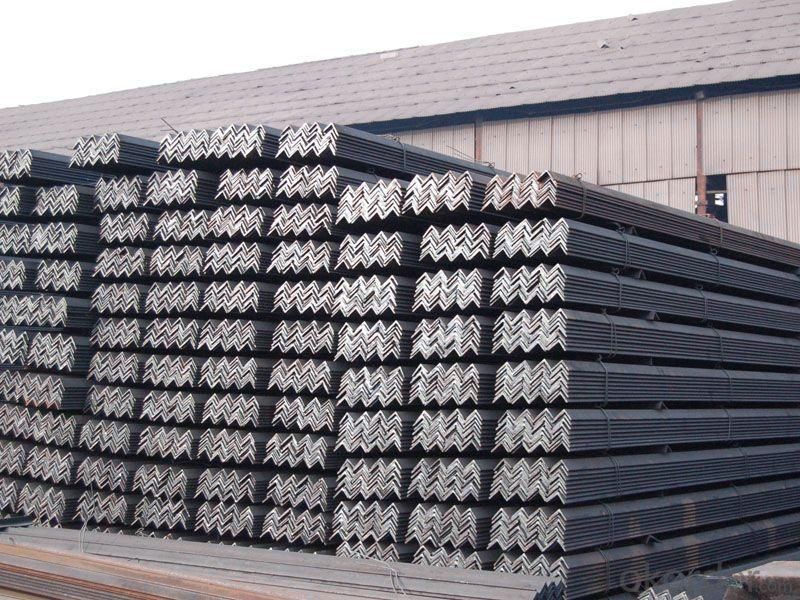
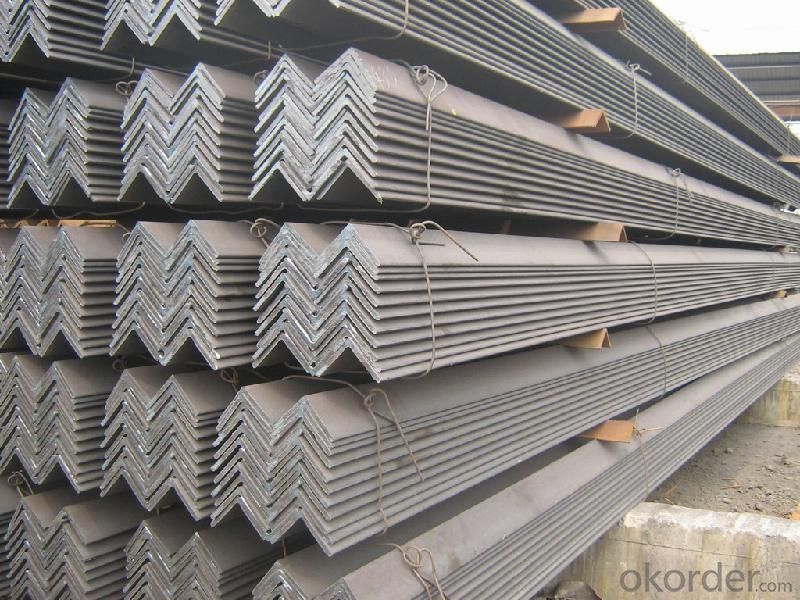
- Q: Can steel angles be used for manufacturing support brackets?
- Yes, steel angles can be used for manufacturing support brackets. Steel angles are commonly used in construction and manufacturing industries due to their strength and durability. They provide excellent support and structural integrity, making them ideal for creating support brackets. Steel angles are available in various sizes and thicknesses, allowing for customization based on the specific requirements of the bracket. Additionally, steel angles can be easily welded, drilled, and machined to fit the desired specifications, making them a versatile choice for manufacturing support brackets.
- Q: How do steel angles compare to other structural shapes?
- Steel angles are a versatile and commonly used structural shape in construction and engineering. They have several advantages over other structural shapes, such as beams or channels. Firstly, steel angles offer excellent strength and stability. Their L-shaped design provides rigidity and support, making them ideal for load-bearing applications. They can effectively resist both compressive and tensile forces, making them suitable for a wide range of structural applications. Secondly, steel angles have a compact and space-saving profile. Unlike other structural shapes like beams or channels, angles have a smaller cross-sectional area, making them more efficient in terms of material usage. This can result in cost savings and reduced weight in construction projects. Moreover, steel angles are highly adaptable and can be easily customized to fit specific project requirements. They can be cut, welded, drilled, and modified without compromising their structural integrity. This flexibility allows for easy integration into various structural systems and applications. Additionally, steel angles offer versatility in terms of their connection options. They can be bolted, welded, or riveted, providing flexibility in joining them with other structural components. This makes them suitable for a wide range of building and construction projects. Finally, steel angles are readily available and cost-effective. They are widely produced and stocked by steel manufacturers, making them easily accessible. Their affordability, combined with their durability and strength, makes them a popular choice for structural applications. In summary, steel angles compare favorably to other structural shapes due to their strength, space-saving design, adaptability, connection options, and cost-effectiveness. Their versatility and performance make them a preferred choice in various construction and engineering projects.
- Q: Can steel angles be used for modular construction?
- Yes, steel angles can be used for modular construction. Steel angles provide structural support and can be easily fabricated and assembled to create modular components in construction projects. They are commonly used for framing, bracing, and connecting modular units, providing strength and stability to the overall structure.
- Q: Are there any limitations or restrictions on the use of steel angles?
- Indeed, there exist certain limitations and restrictions pertaining to the utilization of steel angles. One of these limitations concerns the maximum load capacity that they can withstand. The load-bearing capacity of steel angles depends on their size, shape, and material composition. Exceeding this capacity can result in structural failure or collapse. Another limitation is associated with the installation and fixing methods of the angles. Typically, steel angles are secured through welding, bolting, or other fastening techniques. The effectiveness and strength of these methods can be influenced by factors like weld quality or the type of fasteners employed. To ensure secure attachment, it is imperative to adhere to proper installation procedures and recommended guidelines. Furthermore, steel angles may face restrictions on their usage in specific environments or applications. For instance, in highly corrosive environments, steel angles may not be suitable unless appropriate protective coatings or materials are utilized. Similarly, in applications where fire resistance is crucial, steel angles may need to be treated with fire-resistant coatings or replaced with fire-resistant materials. Moreover, limitations can arise from the dimensions and lengths of steel angles. Steel angles are available in various sizes and lengths, and careful selection of these dimensions is essential to meet the specific requirements of a project. Factors such as load distribution, span length, and overall structural design must be considered to ensure the suitability of the chosen steel angles for the intended application. To summarize, while steel angles are versatile and widely employed in construction and engineering applications, it is crucial to be aware of their limitations and restrictions. These include load-bearing capacity, installation methods, environmental considerations, and dimensional constraints. Consulting with structural engineers, adhering to industry standards, and implementing proper planning are essential to ensure the safe and effective use of steel angles.
- Q: Can steel angles be painted or finished for decorative purposes?
- Yes, steel angles can be painted or finished for decorative purposes. Painting or finishing steel angles can enhance their appearance, provide protection against corrosion, and allow for customization to suit specific decorative needs.
- Q: What is the use of angle steel and channel steel?
- Used to make steel structures, such as steel staircases, plant supports, etc..
- Q: Can steel angles be used for mezzanine floors?
- Yes, steel angles can be used for mezzanine floors. Steel angles are commonly used as structural supports in construction, and they provide strength and stability to mezzanine floors. They can be used to create the framework and support the decking materials of the mezzanine floor, ensuring its durability and safety.
- Q: Can steel angles be used in seismic zones?
- Yes, steel angles can be used in seismic zones. Steel angles are commonly used in construction, including in seismic zones, due to their ability to provide structural support and resistance against lateral forces caused by earthquakes. The specific design and installation of steel angles in seismic zones must comply with local building codes and requirements, which often include additional reinforcement and connections to ensure the structural integrity of the building during an earthquake. Additionally, engineers and architects may employ various design techniques and strategies, such as moment frames or braced frames, to enhance the seismic performance of structures using steel angles. Overall, steel angles can be effectively utilized in seismic zones with proper design, installation, and adherence to seismic design codes and regulations.
- Q: How do you determine the required number of steel angles for a project?
- To determine the required number of steel angles for a project, you would typically need to consider the specific design and structural requirements of the project. This includes factors such as the dimensions and layout of the structure, the load-bearing capacity needed, and any specific codes or regulations that must be followed. A structural engineer or architect would typically perform calculations and analysis to determine the appropriate number of steel angles needed for the project.
- Q: What are the safety precautions when working with steel angles?
- To minimize the risk of accidents and injuries when working with steel angles, it is crucial to follow specific safety measures. Here are some essential considerations: 1. Personal Protective Equipment (PPE) is essential. Make sure to wear safety glasses, gloves, steel-toed boots, and a hard hat to protect yourself from potential hazards like flying debris, sharp edges, and falling objects. 2. Proper handling is key. Utilize mechanical aids such as cranes or forklifts to lift and move heavy steel angles. Avoid manual lifting if the weight exceeds your capacity. Ensure secure stacking of angles and avoid overloading shelves or racks. 3. Organize and keep the work area clean to prevent accidents. Remove any obstructions or clutter that may hinder movement. Clearly mark areas where steel angles are stored or being worked on to prevent unauthorized access. 4. Regularly inspect and maintain tools and equipment used to work with steel angles. Repair or replace any defects promptly and avoid using damaged or faulty equipment. 5. When cutting or grinding steel angles, wear appropriate eye and face protection to shield against sparks, dust, and debris. Use tools specifically designed for cutting and grinding steel. Ensure proper ventilation in enclosed spaces to minimize the risk of inhaling toxic fumes. 6. Store steel angles in a designated area where they are secure and not at risk of falling or causing accidents. Use racks or shelves suitable for supporting the weight and size of the angles. Securely stack and strap them to prevent toppling over. 7. Implement proper fire safety measures. Steel angles can generate sparks when cut or welded. Have fire extinguishers and fire-resistant materials nearby. Keep flammable substances away from the work area. 8. Provide adequate training to all workers handling steel angles. Ensure they understand safety precautions, procedures, and emergency protocols. Encourage open communication and reporting of safety concerns or incidents. By following these safety precautions, you can create a safer working environment and minimize the risk of accidents when handling steel angles. Always prioritize your safety and the safety of others in your work with steel angles.
Send your message to us
Steel Unequal Angle GB Q235 Q345 20-250MM
- Loading Port:
- Tianjin
- Payment Terms:
- TT OR LC
- Min Order Qty:
- 25 m.t.
- Supply Capability:
- 20000000 m.t./month
OKorder Service Pledge
OKorder Financial Service
Similar products
Hot products
Hot Searches
Related keywords
